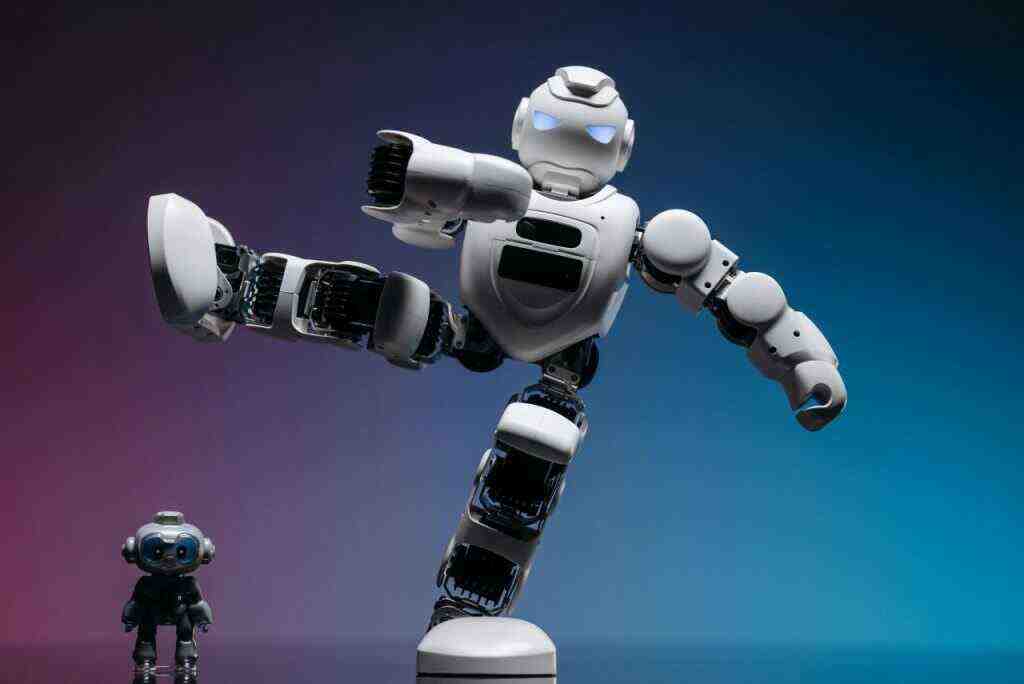Dr. Michelle Sanchez and 4 Engineers Code and Build Robots For Our Future
In a world propelled by relentless technological advancement, the year 2024 witnessed an extraordinary feat of innovation and collaboration. Dr. Michelle Sanchez, a visionary computer scientist and robotics expert, joined forces with a quartet of highly skilled engineers to embark on a groundbreaking endeavor that would redefine the frontiers of artificial intelligence and human-robot interaction. This article chronicles their awe-inspiring journey as they coded, designed, and built robots poised to revolutionize industries and transform daily life.
The Genesis of an Idea
The genesis of this remarkable project can be traced back to Dr. Sanchez’s unwavering belief in the transformative potential of robotics. She envisioned a world where robots and humans would coexist harmoniously, amplifying productivity, revolutionizing healthcare, and creating environments devoid of risk. Inspired by this audacious vision, she assembled a team of engineers who shared her passion for innovation and possessed complementary skills in mechanical engineering, electrical engineering, software development, and artificial intelligence.
The Team Members
This exceptional team comprised individuals with diverse backgrounds and expertise. John Rodriguez, a mechanical engineer with an uncanny knack for intricate design, was entrusted with the task of creating the robots’ physical structures. Sarah Patel, an electrical engineer with a profound understanding of circuitry, ensured that the robots functioned seamlessly. Robert Chen, a software developer with a creative mind, programmed the robots’ intelligent behaviors. Finally, Emily Jones, an artificial intelligence specialist, designed algorithms that empowered the robots to learn, adapt, and make informed decisions.
The Coding and Building Process
The team’s journey commenced with meticulous planning and extensive research. They delved into existing robotics technologies, identifying areas ripe for improvement and conceptualizing innovative solutions. Armed with a crystal-clear vision, they embarked on the intricate process of coding and building their robots.
John and Sarah worked tirelessly to design and construct the robots’ physical structures. They employed lightweight materials, cutting-edge sensors, and innovative actuators to create robots that were both agile and robust. Robert and Emily, meanwhile, collaborated to develop sophisticated software algorithms that would govern the robots’ behavior. They programmed the robots to perform a diverse range of tasks, from simple object manipulation to complex decision-making.
The Unveiling of the Robots
After months of dedicated effort, the team unveiled their creations to the world. They showcased a diverse array of robots, each meticulously designed for a specific purpose. There were robots capable of assisting surgeons in delicate operations, robots designed to patrol hazardous environments, robots programmed to provide companionship to the elderly, and even robots capable of teaching children in classrooms.
The robots’ capabilities astounded the audience. They demonstrated remarkable dexterity, intelligence, and adaptability. They navigated complex environments with ease, interacted naturally with humans, and possessed the ability to learn from their experiences. The successful unveiling of these robots marked a pivotal moment in the history of robotics.
The Impact of the Robots
The introduction of these robots had a profound impact on various industries and aspects of daily life. In healthcare, robots assisted surgeons in performing minimally invasive procedures with greater precision, leading to improved patient outcomes. In manufacturing, robots collaborated with human workers, boosting productivity and efficiency while mitigating the risk of accidents. In education, robots engaged students in interactive learning experiences, fostering a deeper comprehension of complex concepts.
Beyond these practical applications, the robots also had a significant impact on society as a whole. They challenged traditional notions of human-robot interaction, fostering a sense of empathy and understanding between humans and machines. They also sparked discussions about the ethical implications of artificial intelligence and the imperative for responsible development and deployment of robotic technologies.
The Legacy of Dr. Sanchez and Her Team
Dr. Michelle Sanchez and her team of engineers have left an indelible mark on the world of robotics. Their groundbreaking work pushed the boundaries of artificial intelligence and human-robot interaction, creating robots that were not only technologically advanced but also capable of making a positive impact on society. Their legacy continues to inspire future generations of scientists and engineers to pursue innovation and explore the boundless possibilities of robotics.
